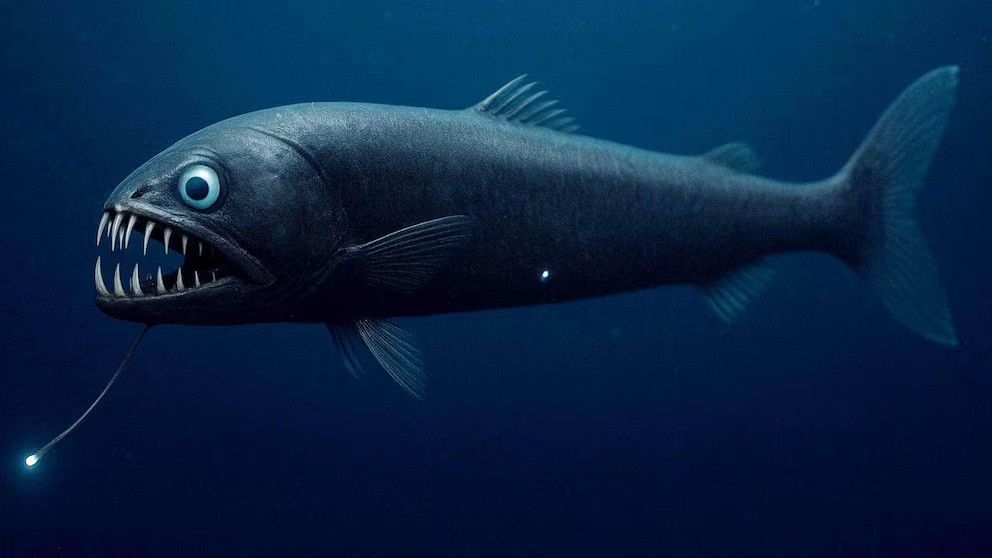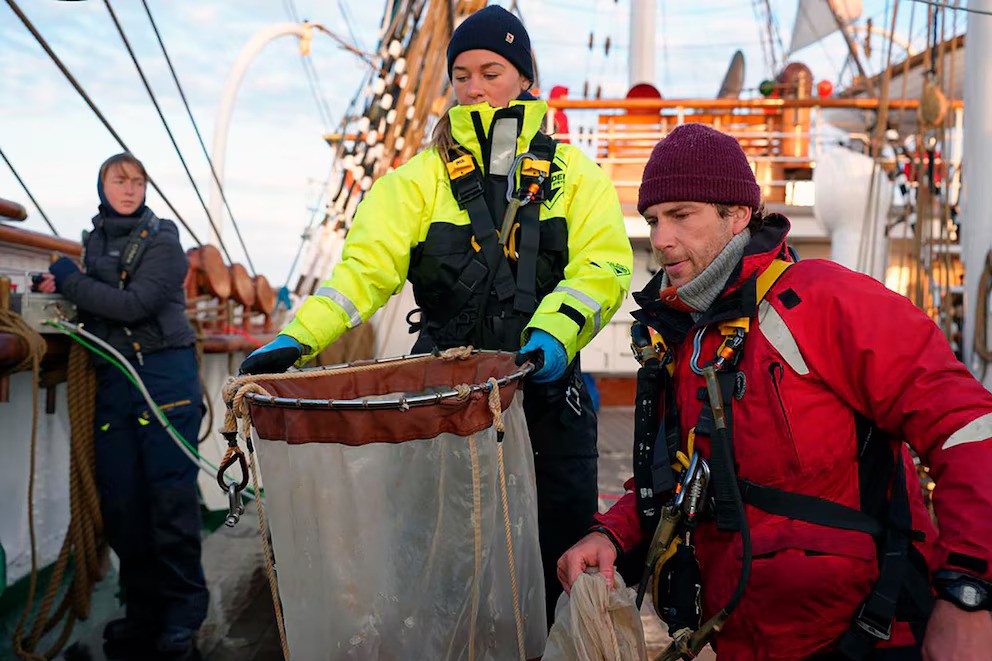Unexpected Lanternfish Discovery Reveals Life in Arctic Ocean Depths

The frozen Arctic seas rank among the harshest places on Earth. Winter brings months of darkness. Summer brings endless daylight. For decades, scientists believed these waters held no deep-sea fish. That view has now changed. An unexpected lanternfish discovery reveals life in the Arctic Ocean depths. Researchers detected the species 1,100 meters down between Greenland and Canada.
The find not only defies prevailing wisdom about what animals inhabit the Arctic. It also raises urgent questions about ocean diversity, climate resilience, and the role deep-sea animals play in Earth’s carbon cycle.

A Rare Discovery in the Twilight Zone
The trip that produced this piece of history was on the Statsraad Lehmkuhl, a research vessel that sailed across Arctic waters. Scientists used echo-sounding equipment—devices that send sound waves into the ocean to detect life below—and recorded unusual signals pointing to the deep scattering layer.
This stratum, generally 200 to 1,000 meters below the surface, is occupied by mesopelagic fish, a group of species that vary within the so-called twilight zone of the ocean, in which sunlight is not readily able to pass. These fish avoid such places as the Arctic because of its atypical light regime.
Marine biologists have long assumed that the midnight sun effect—when the sun doesn’t set below the horizon for a few months of summer—affecting the Arctic north would prevent vertical patterns of migration that are necessary to the survival of the species. But that’s not what the latest research shows.
“We are beginning to find deep scattering layers in the Arctic using echo sounders,” scientist Maxime Geoffroy was quoted as saying in a statement published by Environmental News Network.
Meet the Antarctic Dragonfish

Its catch was Borostomias antarcticus, or the Antarctic dragonfish. The fish was usually found in the Southern Ocean, thousands of miles from where it was recently caught. The dragonfish that freshwater fishermen caught is 30 centimeters long and is part of the big lanternfish family.

Lanternfish are renowned for their bioluminescence. Their bodies carry rows of photophores—special light organs that trigger chemical reactions to create light. They use these flashes for camouflage, communication, and luring prey in the deep sea.
The Antarctic dragonfish looks even more dramatic. Its teeth stretch nearly half the length of its head, and its jaw can hinge wide to swallow prey larger than itself. These features help it survive in a place where food is scarce and every hunt matters.
Why the Lanternfish Matters
Although the dragonfish could be an exotic exception, lanternfish as a collective are the most geographically dispersed vertebrates on the planet. Although relatively small, they have a disproportionate role to play in ecosystems globally.
Every evening, lanternfish belong to one of the largest migrations on Earth—the diel vertical migration. As the day ends, they migrate to the ocean’s surface to feed on plankton and other minor organisms. As daylight begins, they migrate to the ocean’s depths to avoid being eaten.
This nighttime cycle plays a role beyond measure in the carbon cycle of the planet.
- Upper water plankton absorb carbon dioxide while undergoing photosynthesis.
- Lanternfish are plant-eaters that consume smaller animals that consume plankton.
- As lanternfish migrate downward into the ocean’s deep waters, they release carbon back through breathing, waste, and breakdown.
This actively transports carbon from the surface down to the deep ocean, where it can get trapped for centuries.
“This puts lanternfish in a central position in the ocean’s carbon sequestration process,” Geoffroy said.
That is, in the absence of these fish and their nocturnal migrations, the sea itself would be far less capable of regulating Earth’s climate.
Rethinking the Arctic
Oceanographers have long assumed this for decades concerning the Arctic, lacking mesopelagic species such as lanternfish because of its harsh light conditions. Lanternfish are photophobic and prefer avoiding strong light. Because the midnight sun lights Arctic waters year-round, scientists assumed these species could not reach the surface to feed, which made the region seem uninhabitable.
But the presence of deep scattering layers in Arctic waters shows the area may be more biologically productive than researchers have assumed. Scientists took only one specimen aboard, but echo-sounder data suggests huge concentrations of animals may live in the area.
UiT The Arctic University of Norway, which leads the research, says the find raises a wealth of new questions:
- How many mesopelagic organisms are present in the Arctic?
- What do they get up to in polar environments?
- And how can human activities and climate change impact their survival?
A Window Into the Future of Marine Research
The capture of a single lanternfish has brought enthusiasm not only for seasoned scientists but even for students who took part in the Arctic expedition. For many, it is an achievement in the pursuit of discovering the richness of life in polar oceans.
Deep-sea environments remain some of the least explored on the planet. And they are under ever-growing threat—by global warming, warming seas, and even by man-made light pollution in the form of shipping and offshore drilling. Artificial light on the ocean can disrupt the behavior of bioluminescent organisms, with unexpected impacts on entire food webs.
The find highlights the need to accelerate ocean science, especially in the rapidly warming Arctic, which is warming about three and a half times as quickly as the rest of the planet. In order to be able to defend these ecosystems, it is not enough to research their biodiversity but also to recognize their essential position in the Earth’s climate regime.
Oceans Still Full of Secrets
The Arctic-seized lanternfish is not just an unusual catch—it’s a whisper of how much more there is to find on the ocean floor. From their role in carbon storage to their covert bioluminescent communications, lanternfish are an essential part of the ocean equation.
The find also highlights a paradox: while humans are charting outer space with increasing precision, the deep sea—representing over half our world—remains surprisingly unmapped.
As Geoffroy and his crew push on in their research, one thing is certain: the Arctic Ocean is far from desolate. It’s full of secrets to be discovered, one lanternfish at a time.
Further Reading:
